21 Nights / 22 Days
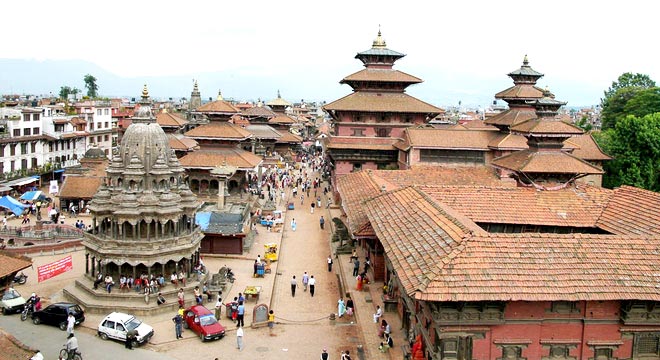
You will arrive in the bustling capital of Nepal in the morning. You will be greeted by a local employee at the airport exit and escorted to the hotel. In the afternoon you make strengthened on a sightseeing tour of Kathmandu.
In the Valley of Kathmandu
The name alone conjures up images of exoticism and adventure, and it corresponds to today these ideas. The extraordinary capital in the Himalayas, which combines culture and tradition of Nepalese in itself will captivate you in no time. The Kathmandu valley is a UNESCO World Heritage Site and is home to extremely lovable and religious people as well as the highest Himalayan peaks. The pagoda-like roofs of palaces, temples and houses, the wealth of excellent crafted carvings and the unique atmosphere of the attraction of the Kathmandu valley from.Hanuman Dhoka Durbar Square First you visit one of the main attraction of the city, the Durbar Square. It is the place in front of the old royal palace of Kathmandu, Hanuman Dhoka which with its numerous temples and statues of Buddhist and Hindu culture. The Hanuman Dhoka Durbar was built of red brick and is at the heart of these sanctuaries. The palace was in the 16th century residence of the Malla kings and now serves mainly as a museum, as well as for coronations and ceremonies. Taleju Temple in Durbar Square is the temple of the goddess Taleju. He is dedicated to the goddess Kali, once the patron goddess of the Malla kings. At the main entrance, a sculpture of Hanuman is the Hindu monkey god, he is the patron deity of the former Malla kings of Kathmandu. , the virgin goddess Kumari in Nepal is considered the Kumari, a little girl, as the reincarnation of the goddess Parvati. Your task is to protect Kathmandu and its citizens. Seven times a year, they carried on a palanquin through the streets. The rest of the time, from about the age of 4 until puberty, when it loses its divinity and is replaced by another girl, she must not leave the house.
Today you will take a trip to Pashupatinath. The place is located on the holy Bagmati River, about five kilometers from Kathmandu. Here there is a huge temple complex, which is one with the largest shrines of the Hindus. Lord Shiva in his incarnation as Pashupati is here as - - Lord of the animals worshiped. Non-Hindus may not enter the main temple, but worth a try anyway, because around the temple complex of Pashupatinath, there are a large number of other temples and shrines to visit. On the banks of the holy river located on the ghats the pyres where the Hindus cremate their dead. Boudhanath - Another world not far from Pashupatinath is the Buddhist shrine of Boudhanath, you can not miss. The 36-meter-high stupa is one of the most important Buddhist shrines in the Kathmandu valley and is the heart of Tibetan Buddhism in Nepal. Impressive is the white tower crowned by a golden stupa is surrounded by a group of Tibetan monasteries, which are among the largest in Nepal. Access the stupa is possible only through a narrow passage. Upon entering you expect the penetrating eyes of the Buddha which rises directly in front of you. Swayambhunath - The Golden Tower One of the most recognizable landmarks of Nepal is the golden tower of Swayambhunath. It is approximately 2000 years old and surrounded by many small temples and statues, as well as some Buddhist monasteries. A pilgrim trail leads up through a wooded park about 365 tree statues steps to the temple platform.
Today you will visit the most important place of sacrifice of the Kathmandu valley. On the days of sacrifice on Saturdays and Tuesdays to gather crowds of Hindus in Dakshin Kali, one of the goddess Kali worship consecrated to the goddess to sacrifice chickens and goats in order to vote so amicably.
Kirtipur - The City of the nose lots of
the old Newar city was once an independent kingdom, against the siege of Gurkhas troops sat down in the 16th century adamantly resisted, but without success. A defeat was not to prevent, and the city was defeated. The Gurkha King was not enough, the victory, he let all the men of the city noses and ears cut off because it was met with great resistance to. Kirtipur is still a very purest place where time seems to stand still. Patan - The oldest royal city , visit the second largest city of Nepal and also the oldest of the three royal cities in the Kathmandu Valley. This city seems so far removed from the present that it acts like a living museum. Their monuments are among the most beautiful and best preserved in Nepal. In the narrow streets and squares with their beautiful pink temples, life is still the same as from centuries ago. 1482 told King Yaksha Malla dynasty from the land among his three sons on. Patan - then Lalitpur - Beautiful city - called capital was, the other two being Bhaktapur (Bhadgaon today) and Kantipur (Kathmandu now). Bhadgaon - The third royal town about 16 km you Bhadgaon from the capital Kathmandu. Immerse yourself in this indescribable atmosphere that emanates from this place and experience a journey through time that is even more intense than about those of Patan or of old Kathmandu. Bhadgaon was built on a hillside and is surrounded by the fields of the Newar farmers.
Today for Your journey continues west to the city of Pokhara. It lies at the foot of the Annapurna massif, on the beautiful Phewa lake.
Pokhara is the second largest city of Nepal and is located in the center of Nepal at an altitude of 827 m above sea level. Once the city was trade center of an important caravan route between India and Nepal. The old town with its trading houses in the Newari style and the numerous temples testify to that time. It lies in a fertile and breathtaking valley and offers spectacular views of the Annapurna massif. Pokhara is the starting point for trekking, a paradise for paragliders and delightful place to relax. Phewa Lake company today in the early morning hours, a boat cruise on the most beautiful lake in Nepal. Experience a fascinating natural spectacle of a special kind, when reflected on the smooth surface of the water, the rising sun and the rocky summit of Machhapuchhare. Bindhya Basini Temple After breakfast, explore the city and its surroundings. Visit the Bindebasini Temple. It is dedicated to the Goddess Bhagwati and the religious center of the old bazaar. Devin's case There are numerous legends about the name of this legendary waterfall. Legend has it that a Swiss tourist, named Devin, drowned in a bath. The Phewa lake flows into the Pardi Khola and disappeared underground. The special is that a cave is in the depth and the water after a few hundred meters from the earth again flows out and forms a river. Mahendra GuphaThen you will visit the fascinating Mahendra cave, this is four kilometers north of Pokhara. It consists of limestone and impressed with their stalactites and stalagmites that have arisen in the last millennia. Of the locals, the cave Chamero Odaar - Bat Cave - called.
Today you will travel route to the lowlands of Nepal to the Buddhist pilgrimage site of Lumbini and to the border of India. Here was Siddhartha Gautama, the founder of Buddhism, born in 623 BC. Lumbini is one of the four holiest places of Buddhism and pilgrimage for Buddhists from all over the world. In 1896 the site was discovered archaeological and shows ancient ruins and antiquities from pre-Christian times. Here is a 6.5 m high stone pillar with an inscription was discovered in honor of the mother of Gautama who had built BC the ruler Ashoka in 249.Buddha - The Enlightened One was on a full moon day in May of the year 623 BC Siddhartha Gautama was born in Lumbini as a royal son. His father was King Suddhodana and his mother the queen Majadewi. He grew up sheltered in his father's court to, got married and had a son. With the birth of his son he realized that everyone is born of, disease and death is exposed and so the suffering is omnipresent. At 29, he decided his family and the royal wealth at the court to give up and left home. He wandered for six years as an ascetic, in search of the meaning of life. Siddhartha was on his way to Bodhgaya in India, where he meditated for six years. On a full moon day he sat under the Bodhi tree and stayed there until he again drove enlightenment in meditation. Since that time, he named the Buddha (enlightened one). As an itinerant preacher for 45 years, Buddha spread his teachings. At the age of 80 years to 483 BC, he died in a monastery in Sravasti. Maya Devi Temple - A place of peace , the Maya Devi Temple named after Buddha's mother. After twenty years of marriage and childlessness, Maya Devi dreamed of a white elephant, let her by touching her right hip conceive a child. After ten months of pregnancy the child in Lumbini, in a garden under a tree, was born. Inside the Maya Devi Temple, a birth stone marks the exact spot, to have come to the Buddha to the world. The white and stunning building is a unique experience, a place to relax and meditate and as peaceful as Buddha's teachings itself Enjoy this holy place, which is surrounded by beautiful gardens and many monasteries and also visit the Ashoka Pillar. According to your tour of Lumbini make their way to Gorakhpur in India. Nepalese your companion will leave you and your indian guide will take delivery.You will stay in Gorakhpur.
Through the Gangetic Plain, it goes on to the capital of the state of Bihar after Patna. The capital city of Patna was founded in the 6th century BC and has a 3,000 year old history. From this ancient culture today is not much to see since almost everything was destroyed by the Muslim invaders in the 12th century and in the 16th century. TheJain worship Pawapuri located 32 km south east of Patna. Here ascetic Mahavira, who was at the cremation ground, for the deceased in the 5th century BC Jain Jalmandir Temple built in a lotus pond, surrounded by five other temples. Nalanda - The ruined city of your trip takes you to the Rajgir 93 km away . On the way visit the ruins of Nalanda, an ancient center of higher learning. Once home to the largest Buddhist university in which more than 10,000 students and 2,000 professors studied and taught. Even the Jain ascetic Mahavira and Buddha proclaimed their teachings here. As the largest teaching center of the ancient world was the library, which is said to have housed 9 million books. Their heyday Nalanda from 5th to 12th century until 1199 the victim of a Muslim invasion. After an extensive tour of the numerous monasteries and temples you will continue your journey to Rajgir.
The place was in the 6th century an important metropolis and for many centuries the capital of the powerful Magadha kingdom. The former town wall with its towers was once 50 km long. In Rajgir Buddha spent several years during the rainy season and meditated. Once the capital is for Buddhists and Jains a holy place and an important pilgrimage site. Five kilometers to the south, a cable car up to Rajgir Hill. Here is the bright white 400 m high Vishwashanti stupa. Golden Buddhist statues depicting the four stations of the Buddha's life, birth - enlightenment - Sermons - death . From Rajgir Hill you have a fantastic view of another hill, on which a number of Jain shrines are located. You then make their way to the small town Bodhgaya. The rest of the day is for your own explorations available.
Bodhgaya is the spiritual home of Buddhists and attracts thousands of pilgrims from all over the world. Here is the place where Siddhartha Gautama in 534 BC, under a Bodhi tree, attained enlightenment and became the Buddha. Nearby points of several nearby Buddhist monasteries and temples were errichtetet of different nations such as Thailand, Sri Lanka, Japan, Korea, Vietnam, Bhutan, Tibet, Bangladesh, Burma and Taiwan. visit to the Mahabodhi Temple One of the holiest Buddhist sites in Bodhgaya is the Mahbodhi Temple. It is a beautiful temple with a 50-meter-high pyramid-like tower. It marks the exact spot of the Buddha attained enlightenment under a Bhodi tree. Here grows a descendant of the original Bodhi tree whose incredibly heavy and thick branches need to be supported. Inside the temple there is a gilded sitting Buddha, his right hand touches the ground at the moment of enlightenment. Let yourself be captivated by this gentle atmosphere and enjoy the tranquility that emanates from this place. Gaya - A famous place of pilgrimage on the banks of the holy river Phalgu, about 15 km from Bodhgaya, lies the small town of Gaya, an important pilgrimage center of the Hindus .Thousands of creditors flow forth here with certain ceremonies to rid their dead from the sins, so that they can be cleaned and freed from every burden in their next life occur. In the river the pilgrims take a purifying bath and lay down along the shore offerings before the Vishnupad Temple entered. Unfortunately, non-Hindus are not allowed in the temple. Nevertheless, already worth the sight of the temple from the outside. Then you drive back to Bodhgaya in your hotel.
After breakfast, make their way to the holy city of Varanasi. Upon arrival and check-in at the hotel, you will visit in the afternoon the small town of Sarnath, located just 10 km east of Varanasi. It is one of the four holiest places of Buddhism and one of the oldest sites.
Emperor Ashoka, a successful commander, has finished his military campaigns after a particularly bloody and costly battle. He turned to Buddhism and Non-Violence and built in Sarnath an important religious center of monasteries and stupas, which were destroyed by a Muslim invasion in the 7th century AD. Until now seems from the preserved remains of this holy place a special likely stimulus. Because unaffected by the destroyed buildings pilgrimage Buddhist devotees still to the dilapidated remains of monasteries and temples.
Dhamekh Stupa
The best preserved monument of Sarnath, is the most impressive, originating from the Gupta period large Dhamekh Stupa with its partially preserved, finely machined stone reliefs. In the park of Sarnath Buddha preached in 528 BC after his enlightenment, the first four noble truths , which the Eightfold Path to Nirvana included.Emperor Ashoka was the exact spot, is said to have held his first sermon at the Buddha, building the impressive stupa.
Ashoka Pillar Just to the west are the remains of the famous Ashoka pillar from the 3rd century BC Originally, the column 15 m high and was topped by four lion heads, which are the main attraction of the museum of Sarnath today. All that remains of the five parts of your base. Are Archaeological Museum Built from sandstone museum houses some treasures from the past. Among the most impressive exhibits include originating from the 3rd century well preserved L枚wenkapitell the Ashoka Pillar, which now adorns the Indian national emblem, as well as an old stone shield carved with the ornate Buddhist symbols.
Varanasi, once known as Benares, is the holiest city in India and one of the oldest inhabited cities in the world.Located on the banks of the Ganges put it on for centuries pilgrims who seek salvation and consolation. The Eternal City , such as Varanasi is also called, whose temple so often plundered by conquerors and their walls so many times destroyed by the raging waters of the Ganges, one can only imagine how it once looked like here. But the sacred rites of the people on the famous Ghats, on the banks of the holy Ganga and the many pilgrims leave the past back to life and the old Benares awakened again. The old town - stroll through the narrow streets ofthe ancient city of Varanasi is a maze of countless streets and alleys where just enough space to work. A great experience is a walk through the old town, for here, the life takes place in a harmonious way of humans and animals. The Ghats The main attraction of Varanasi are about 80 ghats lining the Ganges shore. Here you can get an insight into the vitality and diversity of Hindu rituals. From morning to night, thousands of pilgrims on the ghats to pray, or to take a bath in the Ganges. They hope this will wash away all sins.
Aarti ceremony on the evening Experience an Aarti ceremony on the famous Dasaswamedh Ghat . Here nightly spectacular finish prayer ceremonies the day on the Ganges. There are songs sung ignited incense and torches and juggles through the air to the sound of bells. Then small cylinder filled with flowers bowls are lowered into the water. Let yourself be captivated by this magical mood and also put a small bowl into the water and send your own personal wish of Mother Ganga.
With a rowboat, you will experience an unforgettable experience and a great spectacle in the early morning at sunrise, when the first rays of the sun the Ganges leaves shine in different colors. See how on the water flowers and garlands, which were presented to the goddess Ganga and drive flickering oil lights on small bowls downstream. Enjoy the colorful life along the ghats, listen to the sound of bells from the nearby temples and let yourself be enchanted by this stunning atmosphere.
Flight to Khajuraho
You will leave Varanasi and fly at noon to Khajuraho, in the state of Madhya Pradesh. After the transfer to the hotel in the afternoon you will visit the Eastern group of temples of the 1000 year old temple city. Khajuraho - sensuality set in stone Today your journey takes you to the highlights of the Indian subcontinent, to Khajuraho. In the period 950-1050 AD, this small town has experienced an astounding golden age of architecture. These temples plant is one of the most magnificent examples of medieval temple art in India. The temple is mainly famous for its many erotic stone sculptures. These masterpieces of stone carving demonstrate all the perspectives of human existence. The sculptures and reliefs showing gods, nymphs, demons, fear, doubt, jealousy animals, warriors, and mostly women and lovers in perfect passion. When the British saw the temple for the first time, they were shocked by the erotic representations. You misunderstood the actual message of the figures. For the Hindus of the Middle Ages the universe was held together by the female and the male and the sexual union of man and woman was for them an expression of that perfect connection. Visit Eastern group of temples of Khajuraho The Jain shrines are smaller than the western group of temples and are in close to the Khajuraho village. The Parsvanath Temple , with its impressive architecture and beautiful sculptures. Especially remarkable two female figures are shown in an impressive way how a mandrel is removed from the foot and the other lipstick. The Shantinatha temple houses a huge, 4.5-meter-high statue of Adinath. It is somewhat smaller than the adjacent Adinatha Temple , who also have very nice sculptures.
In the morning visit the Western Hindu temple group nestled in the midst of a park which are located. Particularly worth seeing is the big majestic, Vishnu consecrated Lakshman Temple , with its lush embellishments. He is the first built in the Khajuraho temple style and combines all the temples of the late Hindu period in itself. To the west of the park are three great temples. The magnificent Kandariya Mahadeva Temple marks the culmination of the Chandella architecture. His two archways at the entrance are true masterpieces of stone carving. His characters are composed of slender, large sculptures and a lot of erotic depictions. The Devi Jagadambi Temple was God Vishnu originally dedicated, later Parvati, the consort of Lord Shiva, and finally the goddess Kali. Chitragupta Temple This temple is the only god of the sun dedicated to Surya and a treasure in northern India. Dating from the 11th century shrine houses inside a 5 m high statue of Lord Surya. Following the tour, you are on their way to the magnificent medieval town of Orchha, check there in a hotel and go in the afternoon invigorated on sightseeing tour of Orchha.
Orchha - A hidden beauty of
the serene and magical Orchha was once a princely state in the old kingdom of Bundelkhan. The mighty, founded on the banks of river Betwa, the Rajput capital developed during the reign of the warlike Bundela dynasty to important town in the area. The founder of the city, leaving fantastic buildings of different architectural styles, which fuses Hindu, Indo-Islamic and European influences. , you are the charm of this small town with its pink painted houses, picturesque streets, this pristine beauty with its magnificent palaces and temples be immediately succumbed. The Fort of Orchha The impressive fort from the 15th century situated on a hill, surrounded by dense vegetation. A true architectural masterpiece of medieval architecture is the impressively constructed bridge from the 17th century. It reflects the architectural achievements, the erstwhile rulers Orchha, in the Middle Ages resist. temples and palaces in the center of the city stands on a platform of the Chaturbhuj Temple. The path leads over several spiral staircases. At the top you will be rewarded with a magnificent view of Orchha, its surroundings and temples. Including the Ram Raja, the former palace of Maharani. On the other bank of the Betwa is the Raj Mahal. the former residence of Madhukar. It is decorated with beautiful murals.
Your journey takes you today to Bhopal. On the way visit the small town located Sanchi, approximately 48 km north-west of Bhopal. Sanchi was until the 12th century a very important Buddhist pilgrimage center. Today, it is an archaeological site, which is a UNESCO World Heritage Site. The small town has a real jewel of Buddhist architecture. On a hill the oldest stupa perched still on the declining over time king Ashoka. Middle of the 2nd century BC it was partly rebuilt and enlarged. The stupa consists of honey-colored sandstone, surrounded by a stone fence with four ornate archways. The facility houses several Buddhist monasteries with scenes from the life of Buddha. After the visit you make go to Bhopal and check there in a hotel.
Bhopal, capital of Madhya Pradesh, is picturesquely situated on seven hills like Rome and built between three lakes. The city is a mix of historic industrial city, cultural center, palaces, mosques and gardens, yet still looks like a quaint provincial town. The ruler Raja Bhoj founded the city in the 11th century and put on the three artificial lakes. Taj-ul Masjid - The mother of all mosques This mosque is one of the largest mosques in India and was built by Shah Jahan Begum. It is an architectural masterpiece, although it was never completed. Bharat BhawanThis contemporary building was built in 1982 by the famous architect Charles Correa. It is an art center where exhibitions and performances take place, it also houses a museum with modern Indian painting. According to the tour in Bhopal are on their way to Indore.
Indore has many things to offer no special attractions, but is an ideal starting point for an excursion to Ujjain.Ujjain - The ancient city Fifty kilometers north of Indore is Ujjain and it is, as Varanasi, an ancient city with a multi-thousand year history. It is one of the famous seven holy places of Hindus in India. In the village there are numerous temples and buildings from different periods. Every 12 years there is the Kumbh Mela here. It is an impressive event, flock to the hundreds of thousands of pilgrims. Mahakal Temple , the most important temple in Ujjain is the Mahakal Temple, for every 12 years - is visited by millions of pilgrims - Simhasta hard-Kumbh Mela.The temple houses the sanctum of one of the revered throughout India twelve Flammenlingams that represents Lord Shiva. . Following the destruction in 1235, the sanctuary of the Scindia dynasty in the 18th century was rebuiltmake you look after the journey continues in the 90 km distant city of Mandu.
It offers the largest and most beautiful fortress city in the world. In the 16th century, the Mughal emperor Akbar captured the town and destroyed many of its magnificent buildings. The scattered remains of the former capital of the Kingdom of Malwa Mandu make one of the most breathtaking fortifications at all. The architectural remains of the fortress, the palaces, canals and pavilions give an idea of how big this city must have been once. A 75 km long wall, with twelve gates guarded this city. This allows you to visit the palaces, tombs and mosques in full, you will have the entire day.
Today you are on their way over the Deccan plateau to Aurangabad, where you will arrive in the afternoon. Upon arrival, the remainder of the day for your own explorations available.
Is located in the hilly upland Aurangabad. The city has several attractions to offer, among other things, it houses a replica of the Taj Mahal. It is a perfect starting point for visiting the famous cave temples of Ellora and Ajanta.Caves of Ellora Today you take a half-day excursion to the Mahayana caves of Ellora, which are among the largest and most historical monuments in India. From the original natural caves and rock shelters built between the 5th and 11th century a number of ornate shrines. When Buddhism around the turn of the millennium became less important, the five Jain cave temples and the 17 Hindu shrines, which are characterized by their expressive sculptures created. The caves spread on a two-kilometer of steep slope. Caves of Ajanta afternoon, take an excursion to the caves of Ajanta. In a remote ravine in the valley of Waghora level about 550 m extend into a steep rock face in a semicircle beaten famous caves of Ajanta. Experience the sensational atmosphere of Caitya Caves of Satavahana dynasty and under the Vakatakas monastery built residential caves of Mahayana Buddhism. The caves came primarily through the impressive paintings to their fame.
Today is the last leg of your long tour on the program. Cross the mountains of the Western Ghat and reach the metropolis of Mumbai. After your arrival time to recover from the long drive and relax the rest of the day.
Mumbai, the former Bombay is a fascinating city and the main port city of the subcontinent. She's transport hub and cultural center in one, with numerous museums, universities, theaters and galleries. Experience Mumbai as a place of contrasts, with splendor and misery, with a cityscape dominated by English colonial buildings and modern Indian skyscrapers, unique monuments to extended slums. symbol of the cosmopolitan city is the colorful Bollywood , the capital of the film - the Hollywood on Arabian Sea - as well as the largest film industry in the world. Here every year 800 films are produced, which attract millions of viewers each week in the cinemas. Before a failed scenery and exotic locales, a perfect blend of passion, heroism and battle scenes from plays, which usually have a duration of 3 hours. Huge part of hand-painted movie posters adorn the cityscape of Mumbai.Gateway of India The first tour takes you to the southern tip of the peninsula, in the district of Colaba. Here is the famous landmark of the city, the Gateway of India. This imposing 26 m high triumphal arch, decorated with Indo-Islamic stone carvings, was the first saw the travelers upon their arrival. It was built in 1911, when for the first time a British Monarch, King George V, entered Indian soil. Still emanating from the grand Arc de Triomphe much of the imperial self-confidence of those days. shut down the Marine Drive along, up to Malabar Hill - the Beverly Hills of Mumbai - the residence of the rich and famous. Here extend the Hanging Gardens , a true work of art of garden design and a delightful floral park. From here you can enjoy a beautiful view of the southern part of the city.
Dhobi Ghat
In Mahalaxmi neighborhood is the oldest and largest laundry in the world, the Dhobi Ghat. Under the open sky clean hundreds of scrubbers in the countless stone basin daily thousands of garments by hand. Here, the laundry is wrung, beaten and, powered by glowing coal, iron ironed. As far as the eye can pile up mountains of laundry. It is impressive that in this crowd reached the laundry back to his owner. The visit at Dhobi Ghat is an amazing experience that should not be missed under any circumstances. Elephanta Caves you take a boat trip on the little green Elephanta Island. It is located 10 km east of Mumbai and houses painstakingly carved into the rock cave temples from the 7th century. This Hindu shrines represent the Brahmanical Renaissance. The Shiva temple was consecrated cave carved from a piece of rock and is a true masterpiece. The relief of the three headed god shows another manifestation of Shiva as the creator, preserver and destroyer.
After an eventful journey, it now goes back to the homeland. At the appropriate time you will be driven to the airport of Mumbai.
PML Travel Group Through Its Strategic Business Units and Partners Tour Operators World-wide, Caters to the Travel Needs of Varied Business Segments Viz, Individual Travel, Group Travel, Mice, Luxury Travel, Rail Journeys, Soft Adventure, Charter Operations, Cruise Handling , Museum Tours, Educational Trips, and Wellness Holidays. Our Strong Alliances in the South Asia Region Extend Into the Tourism Friendly Countries of Nepal and Bhutan. Read More...
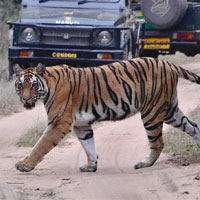 8D/7N
8D/7N
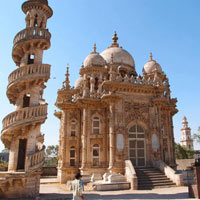 11D/10N
11D/10N
Vibrant Gujarat Fort and Palaces with Sa..
New Delhi - Ahmedabad - Bhavnagar - Sasan - Junagadh - Rajkot
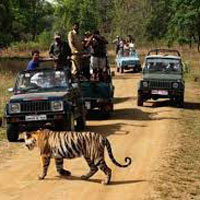 7D/6N
7D/6N
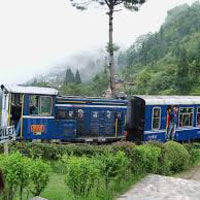 15D/14N
15D/14N
Bhubaneswar - Konark - Puri - Kolkata - Kalimpong - Pelling - Gangtok - Darjeeling ..
 20D/19N
20D/19N
Chennai - Mahabalipuram - Trichy - Madurai - Rameshwaram - Kanyakumari - Kovalam - ..
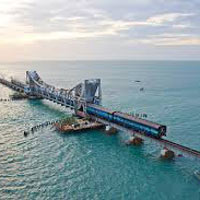 17D/16N
17D/16N
Chennai - Mahabalipuram - Trichy - Madurai - Rameshwaram - Kanyakumari - Kovalam - ..
 15D/14N
15D/14N
Mumbai - Bangalore - Mysore - Ooty - Madurai - Mahabalipuram - Chennai - Kochi - Ta..
 15D/14N
15D/14N
Kolkata - New Delhi - Gangtok - Lachung - Yuksom - Pelling - Bagdogra - Yumthang - ..
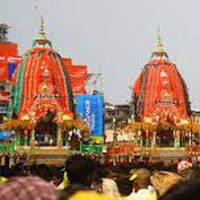 8D/7N
8D/7N
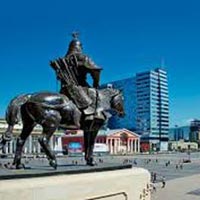 22D/21N
22D/21N
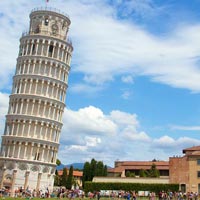 22D/21N
22D/21N
Rome - Innsbruck - Vaduz - Zurich - Lucerne - Heidelberg - Amsterdam - Brussels - P..
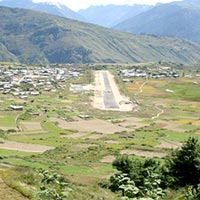 22D/21N
22D/21N
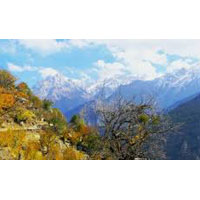 22D/21N
22D/21N
New Delhi - Agra - Shimla - Kullu - Manali - Dharamshala - Dalhousie - Amritsar - H..
 22D/21N
22D/21N
Heritage and Cultural Luxury India Tour
New Delhi - Agra - Jaipur - Jodhpur - Udaipur - Mumbai
 22D/21N
22D/21N
Mumbai - Pune - Satara - Kolhapur - Belgaum - Udupi - Kumarakom - Thekkady - Munnar..
 22D/21N
22D/21N
Stok Kangri & The Markha Valley Trek Tou..
New Delhi - Stok Kangri - Leh Ladakh
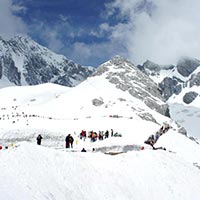 22D/21N
22D/21N
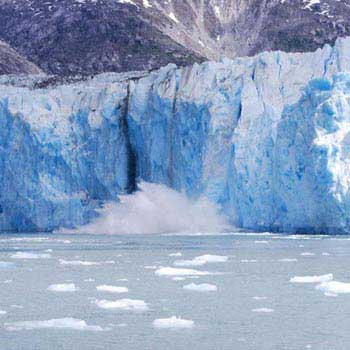 22D/21N
22D/21N
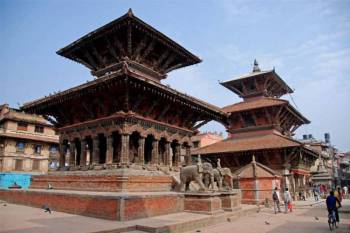 12D/11N
12D/11N
11 Nights - 12 Days Nepal Tour Package - 2
Prayagraj - Gorakhpur - Varanasi - Ayodhya - Kathmandu - Pokhara - Chitwan - janakpur
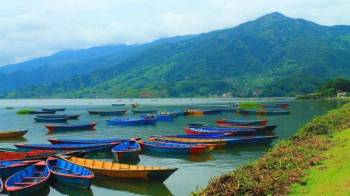 12D/11N
12D/11N
11 Nights - 12 Days Nepal Tour From Gora..
Prayagraj - Gorakhpur - Varanasi - Ayodhya - Kathmandu - Pokhara - Chitwan - janakpur
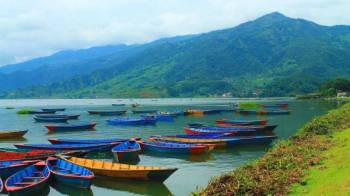 12D/11N
12D/11N
11 Nights - 12 Days Nepal Tour From Gora..
Prayagraj - Gorakhpur - Varanasi - Ayodhya - Kathmandu - Pokhara - Chitwan - janakpur
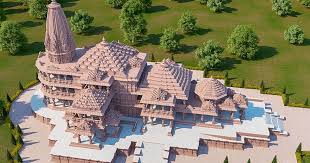 12D/11N
12D/11N
Prayagraj - Varanasi - Bodhgaya - Ayodhya - Pokhara - Chitwan - Parsa
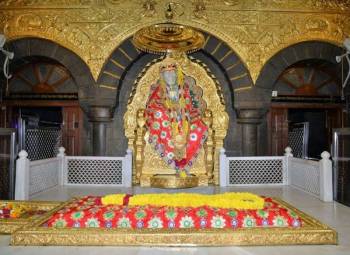 8D/7N
8D/7N
7 Night 8 Days Maharashtra Tour Package ..
Aurangabad - Lonavala - Mumbai - Nashik - Shirdi - Shani Shingnapur
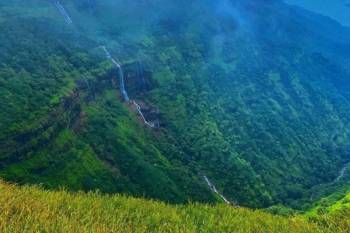 8D/7N
8D/7N
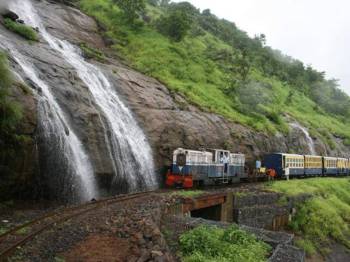 8D/7N
8D/7N
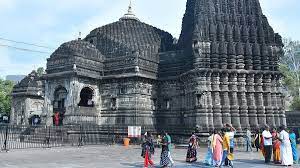 8D/7N
8D/7N
7 Night - 8 Days Maharashtra Tour Package
Aurangabad - Lonavala - Mumbai - Nashik - Pune - Shirdi - Shani Shingnapur
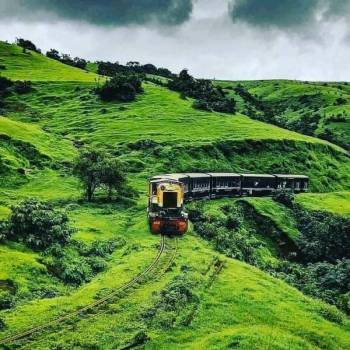 8D/7N
8D/7N